
How foods can flatten your belly
First, we want to reassure you that the foods on our list are delicious. So what makes them “flat-belly foods”? They have four great things going for them:
• They’re so low in calories, you can eat your fill.
• They’re rich in healthful nutrition.
• They’ll leave less room in your stomach for more calorie-dense foods (think desserts). ?
• Prepared in creative ways, they can taste like an indulgence. Case in point: raspberries in a yogurt, brown sugar and Grand Marnier sauce!
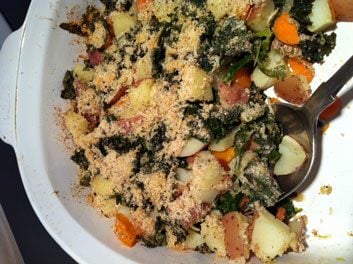
Vitamin-rich greens
Calories: About 60 cal-ories per cup (250 mL).
Nutrients: Deep-coloured greens (kale, collards, Swiss chard) are nutritious and low calorie; experts consider them among the most healthful foods on the planet. Greens are high in fibre and are packed with minerals, vitamins and antioxidants.
Danger: Restaurants often load their greens with butter, bacon or cheese. Limit those, and they’ll remain healthy.
Ideas: For a tasty soup, chop and simmer them for an hour in water or low-sodium chicken broth with chopped onions, garlic, a splash of vinegar and lots of pepper. Sautéing greens is also good, but go easy on the oil.
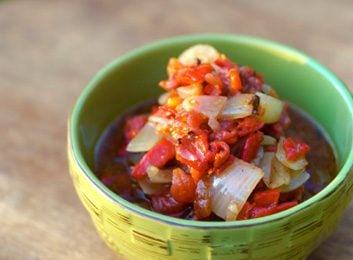
Salsa
Calories: Only five in a single tablespoon(15 mL), or roughly 80 in one cup (250 mL).
Nutrients: When made without chemicals or preservatives, salsa is pure healthfulness: no saturated fat, lots of fibre and a wide mix of vitamins and minerals.
Danger: Some store-bought salsas are high in sodium. But the real danger with salsa is what you eat with it. If it’s lots of tortilla chips, you’re eating too many calories.
Ideas: Use salsa as a replacement for high-calorie, fat-based dressings and sauces. For example, warmed salsa is great as a topping for chicken breasts, baked potatoes, pasta and pork. Or add it to pasta sauces, soups ?or stews. It’s also great in wraps instead of mayon-naise. And if you like it spicy, you’ll be getting an added benefit: Spicy foods burn extra calories and make us eat more slowly.
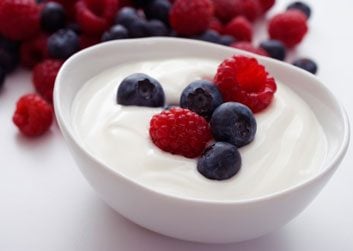
Plain non-fat yogurt
Calories: About 80 for ¾ cup (175 mL).
Nutrients: Yogurt is very high in calcium and B vitamins. It’s also a protein superstar- ¾ cup delivers nine grams.
Danger: While plain yogurt is a near-perfect food, flavoured yogurt generally isn’t. And refined sugar ratchets up the calories, as well as your blood-sugar level. Sugar ?substitutes lower the calorie count, but choose wisely-some artificial sweeteners may actually pose health risks. ?
Ideas: Buy plain yogurt and customize it with your own healthful ingredients: granola, a few dark-chocolate chips or cocoa nibs, or a dollop of your favourite jam or crushed fruit. Yogurt is also a great substitute for mayonnaise in dressings and other recipes. Want an awesomely good ?dessert sauce? Combine plain yogurt, a little brown sugar and Grand Marnier. Yum!
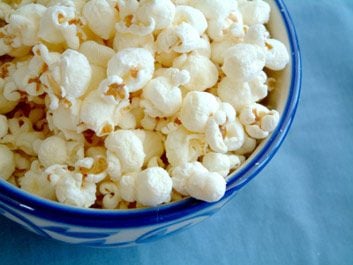
Air-popped popcorn
Calories: About 30 calories per cup (250 mL).
Nutrients: Corn, a whole grain, is high in folate, a B vitamin that’s important for cell development. It is also a good source of fibre; one cup of popcorn contains 1.3 grams. So at 30 calories a cup, you can guiltlessly have a few cups.
Danger: Resist the temptation to add butter! One tablespoon (15 mL) contains about 100 calories. Also, minimize the salt sprinkling. While it doesn’t add calories, ?salt can raise blood pressure.
Ideas: By shaking on pepper (cayenne or black), garlic flakes or other spices, you can create surprising flavour without adding a single calorie. (In fact, cayenne pepper speeds up your metabolism, making you burn more calories.) For a treat, sprinkle popcorn with a little Parmesan cheese.
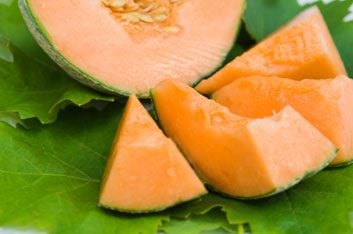
Cantaloupe
Calories: About 200 for the whole melon.
Nutrients: Very high in potassium and vitamins A, C and B6. It’s also high in water content, making it filling.
Danger: The only issue with cantaloupe is sugar: A whole melon has about 42 grams of natural sugars, about the same amount as 1½ cups (375 mL) of pop.
Ideas: Cut half a cantaloupe into small cubes and, whether at home or at work, snack on them throughout the afternoon. (When your container is empty, enjoy drinking the juices left behind.) Watermelon and honeydew melon have similar calorie counts to cantaloupe.
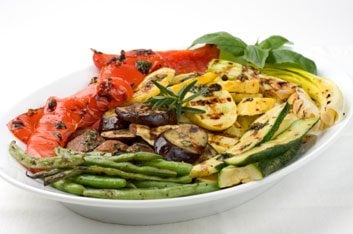
Grilled vegetables
Calories: About 95 for a substantial, filling mix that includes one-half of a red pepper (15 calories), a small zucchini (20), three green onions (30) and two medium-sized eggplant slices (30).
Nutrients: Vegetables pack more vitamins and micronutrients than any other food type. While each vegetable has a different makeup, there’s no bad choice. The golden rule: The richer the colour, the more nutrients inside.
Danger: Vegetables (particularly eggplant) can be oil sponges, and oil is heavy in calories. Rather than brushing them with olive oil before grilling, spray them lightly instead.
Ideas: After grilling, season veggies with salt, pepper, a splash of wine vinegar and herbs such as thyme. Chop them into bite-size pieces and toss them in a bowl for a grilled vegetable salad.
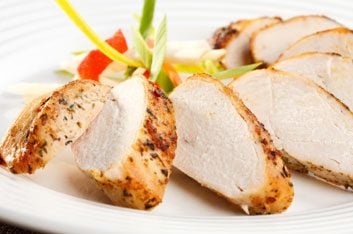
Skinless turkey breast
Calories: An ounce (30 g) contains about 30 calories; that’s 120 calories for a quarter pound (125 g), which is a lot of turkey! By comparison, a quarter pound of sirloin steak has about 400 calories.
Nutrients: Turkey is largely protein-each ounce contains about five grams-and there’s little fat, with only about half a gram per ounce. When it comes to poultry, meat or even seafood, you can’t beat turkey for leanness and healthfulness.
Danger: Sliced deli turkey is extremely high in sodium and ?is often injected with water and preservatives. Ground turkey can be higher in fat, too. So cook your own turkey breast in the oven or on the grill. Slice it and keep portions in storage bags in the freezer.
Ideas: Cook a whole turkey breast with lots of herbs and seasonings (a barbecue dry rub tastes great). Keep the skin on to maintain juices, then remove it before slicing. Have it as an entrée with a salsa-based sauce, or shred it and add it to ?salads, soups or sautés.
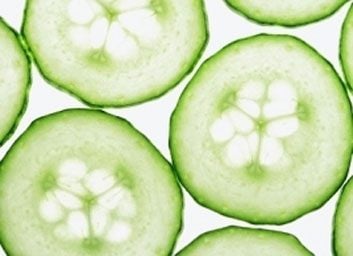
Cucumbers
Calories: About 45 for a medium-sized cucumber.
Nutrients: Other fruits (yes, cucumbers are technically fruits) boast higher nutrition, but cukes are high in potassium, iron, and vitamins A and C.
Danger: The only way to make a cucumber less healthy is to drown it in dressing. And pickled cucumbers can be high in sodium, so check the jar’s label.
Ideas: While many people peel their cucumber, it’s healthier to wash it and eat the peel; that’s where the best nutrients are. Make a cucumber sandwich with onions and low-fat cheese; it’s delicious and only a fraction of the calories of any meat-laden bun.
Ready to make a healthy change in your life? Sign up today for the Vichy Best Health Challenge and get tons of free, exclusive benefits! Find out more >>
Related:
• The 4 worst foods you can eat
• 10 healthy foods you’re not eating
• 7 top fitness foods
